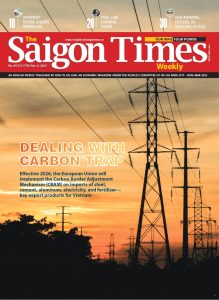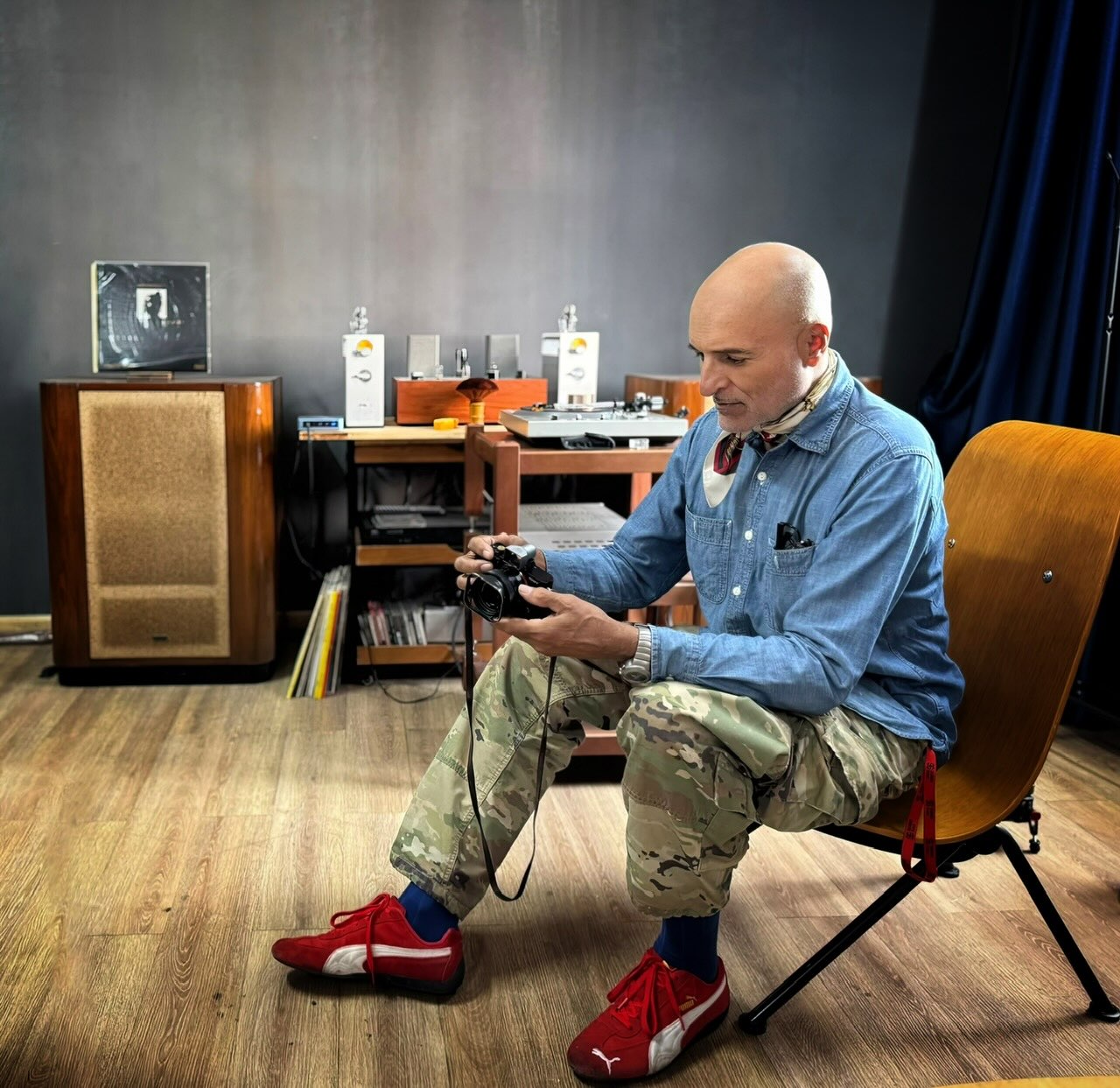Arriving in Vietnam more than three decades ago in search of silk, Pier Laurenza found something far more enduring — a sense of belonging. From Paris to Saigon, from fashion campaigns to UNESCO cultural projects, his camera has become a bridge between worlds. In this conversation, he reflects on how Vietnam reshaped his art, his rhythm, and his understanding of beauty.
The Saigon Times: What first brought you to Vietnam — and what made you stay?
Pier Laurenza: I first came to Vietnam in 1992 because I needed a place to produce Silk Jersey fabric. At the time, I was running my own label, Laurenza, in Paris. The French franc was strong, the dollar was falling, and it became impossible to keep manufacturing in France. I was searching for a new production base and discovered that Saigon had a government laboratory working on silk testing. When I visited, I immediately fell in love — not only with the quality of the fabric but also the warmth of the people. It was hot, chaotic, and alive. The moment the airplane door opened in Hanoi, I felt the heat, the smell of kerosene mixed with flowers and fruit, and I thought: I have been here before. It reminded me of my childhood in Panama — same humidity, same tropical rhythm. It felt like coming home.

What did living in Vietnam teach you as an artist?
It taught me patience and intuition. When I first came, there were almost no cars — only bicycles and a few yellow taxis. Power went out often, so you learned to wait, to adapt. Vietnam taught me to let life happen and capture it as it unfolds, not to force anything. It is also taught me simplicity. You see beauty in the ordinary — a street vendor, a bowl of soup, an old man fixing his bicycle — and that becomes art.
And has the atmosphere here changed the way you see or create art?
Completely. Before, in Paris or New York, my work was structured — controlled light, perfect framing, precision. Vietnam loosened me. The light here is unpredictable — golden one minute, silver the next. You have to surrender to it. My photography became more emotional, less technical. I no longer chase perfection; I chase feeling.
How would you describe your photography style?
I would say quiet observation. I like to catch moments when people are not posing, when they forget I am there. Those fleeting gestures say more than a thousand words.
You often shoot in black and white. Why?
Because that is how I started. When I was young, I joined a local photo club that had a darkroom. I learned to develop my own film there — the smell of chemicals, the red light, the magic of seeing an image appear slowly in water. That stayed with me. Black and white forces you to focus on composition and emotion, not distraction. Maybe color is for my clients — black and white is for me.

Can you share one moment when you felt you truly captured the soul of Vietnam through your lens?
Once, I was in the Mekong Delta at dawn. A fisherman was repairing his net in the fog. The light was soft, everything still. When I saw the picture later, it was not just a man — it was silence, resilience, history. That photo, to me, is Vietnam.
You have worked with UNESCO — how did that happen?
My father worked for UNESCO for 25 years, so I was familiar with their mission. In the 1990s, I proposed a project in Bosnia, just after the war ended. I documented the lives of people rebuilding their cultural identity — the exhibition later showed in Washington D.C. and Paris.
Then, I worked on another UNESCO project about transmission of knowledge — how traditions are passed orally, especially in places like Cambodia after the Khmer Rouge, where many artists were killed. I photographed old masters of shadow theatre who had buried their puppets to protect them. Their stories were not written — if they died, everything vanished. My job was to make those invisible traditions visible.
That must have been difficult.
It was, yes — not only technically but emotionally. You need government permission, you need trust. You enter people’s lives and their pain. But it’s important work. You don’t do it for money; you do it for preservation.
Have you ever done similar projects in Vietnam?
In Vietnam, my work was more commercial — for brands like Vinamilk, Nestlé, and Tiger. But I also did a personal project during Covid at a hospital in the former District 7. I photographed doctors and nurses in black and white. No one was paid — I just felt it was something that had to be recorded, a chapter of history. Those photos are still on the hospital walls today.
What connects all your work — what’s the thread through your career?
Humanity. Whether it is a portrait, a fashion campaign, or a cultural documentary, I am always looking for the human trace — emotion, fragility, dignity.
You have lived between many cultures — France, America, Vietnam, Panama. How do you see identity?
Fluid. I don’t believe in fixed identities. We belong to many places and none entirely. The more you travel, the more you realize home is not geography — it is connection.
How do you define beauty in photography?
Beauty is honesty. It is not perfect. Wrinkles, shadows, cracks — those are beautiful because they tell stories.
What does success mean to you as an artist?
When someone looks at my photo and feels something they can’t explain. That’s success. Recognition fades, but emotion stays.
How do you prepare before a shoot?
I walk. I watch. Sometimes I don’t even take the camera out. I want to feel the rhythm of the place. The camera should follow intuition, not control it.
Do you plan your shots, or wait for life to happen?
A bit of both. I plan technically — light, timing — but emotionally, I wait. The best images are accidents guided by instinct.
You have also worked for Hollywood productions, right?
Yes, as a location scout. Studios would send me to find landscapes across Vietnam — from Hà Tiên to the Chinese border. I’d photograph possible locations for films, and then they’d decide whether to shoot here. I worked on several major productions, even helped scout for Kong: Skull Island in Phong Nha–Kẻ Bàng. I love that part of the job — traveling alone, discovering hidden corners of Vietnam, meeting people along the way. I’d stop at roadside cafés, drink coffee, talk to locals. That’s how you see the real country.
And now, what are you most focused on?
Now, I’m turning more toward portrait photography and teaching. After so many years in the industry, I want to pass on what I’ve learned. I’m preparing a course called The Collective Academy 2025 – Introduction to Photography, a six-day analog and digital workshop held at Studio Collective in Thu Duc City. It’s designed for beginners, hobbyists, and creators who want to learn to truly see — not just take pictures. We’ll explore film photography, professional lighting, composition, and the art of storytelling. I’ll bring out my Rolleiflex, the classic analog camera, so students can experience shooting on real film — the texture, the anticipation, the smell of the darkroom.

That sounds like a passion project.
It is. I think people today need to slow down, to feel again. Photography isn’t about megapixels — it’s about presence. I want to teach that.
Do you see yourself staying in Vietnam long-term?
Yes. Vietnam gives me peace. The lifestyle here — it’s slower, warmer, more human. No stress, good food, good light. For an artist, that’s everything. I may travel, but part of me will always stay here — in this light, this sound, this beautiful chaos.
One last question — how do you stay so energetic?
Vietnam! (laughs) The quality of life here keeps you young. I walk, I eat well, I work with passion. When you love what you do and where you are, age becomes just another number on the film roll.
Reported by The Ky









